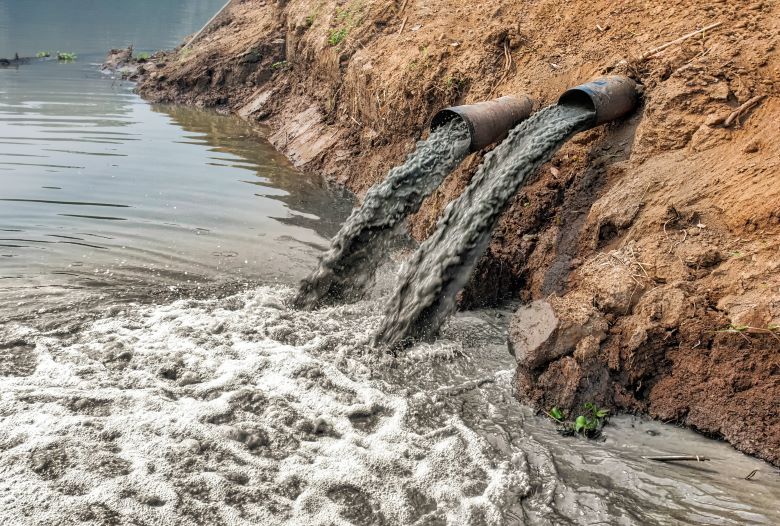
Imagine waking up to the vibrant melody of birdsong. You step outside to gaze upon the beautiful Yamuna River flowing beside your home. This used to be a familiar sight for many Indians. But today, the reality is often far bleeker. Many of India’s life-giving rivers, like the Ganges River, are choked with pollution.
The stench hangs heavy in the air. Toxic foam blankets the surface—a stark reminder of industrial waste, rapid urbanization, and eutrophication. Drinking this water is unthinkable. Fish and other marine life struggle to survive. This water pollution crisis threatens not just the environment but also the livelihood of millions of people.
Yet, amidst the despair, a movement is rising. From government initiatives to community clean-up drives, a collective effort is underway to reclaim the lost glory of Indian rivers. This fight for clean water is not just about environmental preservation; it’s about securing the future for generations to come.
Indian River Pollution: A Growing Crisis
Indian river pollution is a complex issue with a multitude of sources. Here’s a closer look at some of the biggest culprits plaguing Indian rivers:
Industrial Effluents
Many factories discharge untreated or inadequately treated sewage directly into rivers. This sewage is loaded with harmful chemicals, toxic substances, and heavy metals.
Municipal Waste
Raw sewage from homes and businesses often flows untreated into rivers, adding bacteria, pathogens, and organic matter to the water, significantly impacting water quality.
Agricultural Runoff
Fertilizers, pesticides, and herbicides used in agriculture contaminate rivers when they wash off the land during rain, contributing to nutrient pollution.
The consequences are dire. This water, once a source of life, is now unfit for drinking, irrigation, or recreation. The Indian River Lagoon, a vital ecosystem teeming with marine life, faces suffocation from excessive nutrient pollution.
The Devastating Effects of Polluted Rivers
The consequences of water pollution in Indian rivers are severe. Here’s how it impacts public health:
Poisoned Taps
Imagine turning on the tap for a refreshing drink only to see murky, discolored water. Nutrient pollution from fertilizers and sewage contaminates drinking water sources, causing diseases like cholera and typhoid.
Choking Cities
Toxic foam from industrial waste accumulates on the river surface and is carried by the wind into nearby towns and cities. This air pollution causes respiratory problems, especially for children and the elderly.
The once-life-giving waters are now a source of sickness, hunger, and despair. It’s a harsh reality for millions of Indians who depend on these rivers for their survival.
Taking Action: Cleaning Up India’s Rivers
The fight for clean rivers is no longer a dream—it’s a movement gaining momentum across India. Here’s how the tide is turning:
Clamping Down on Polluters
The Central Pollution Control Board is tightening its grip on industrial waste. This reduces the flow of harmful chemicals and toxic substances into rivers.
Upgrading Infrastructure
Many cities are revamping their aging sewage treatment plants. This significantly reduces bacterial contamination and the risk of harmful algal blooms.
Community Action
The spirit of volunteerism is alive and well. Armed with gloves and bags, citizens are removing tons of trash from surface waters, preventing it from entering the water and harming marine life.
These efforts, big and small, are creating a wave of change. By working together, communities are sending a powerful message: India’s rivers are a national treasure, and their health is vital for the nation’s future.
The Role of Individuals in Combating Water Pollution
You can also play a part in the fight for clean water in Indian rivers. Here’s what you can do:
Read Product Labels
Look for fertilizers and pesticides labeled for minimal environmental impact. Excess nutrients from agriculture contribute to harmful algal blooms, which can deplete oxygen levels in rivers, creating dead zones.
Dispose Waste Properly
Don’t throw garbage into rivers or storm drains, which can contribute to stormwater runoff and bacterial contamination.
With these small changes, you can help prevent harmful algal blooms, dead zones, and the overall decline of water quality in India’s rivers. Remember, a million drops can create a wave of positive change.
Innovation for Clean Water Solutions
Technology can also play a crucial role in cleaning up India’s rivers. Here are some promising areas of development for wastewater treatment:
Wastewater Treatment Technologies
New and innovative technologies can help treat wastewater more effectively and efficiently, reducing high levels of harmful pollutants entering rivers.
Biosensors
These high-tech sentinels can detect spikes in harmful bacteria or toxic substances from industrial waste before they cause major problems.
Nature-Based Solutions
Techniques like using constructed wetlands can help to naturally filter and purify river water.
These are just a few examples of how innovation is lighting the path towards a future with clean rivers. With continued investment and collaboration, these advancements can become powerful tools to restore India’s water resources and ensure a healthy future for all.
Financing the Fight for Clean Water
Cleaning up India’s rivers will require significant investment. Here are some potential sources of funding for the pollution control board and Indian River Lagoon programs:
Government Funding
The government can allocate more resources to wastewater treatment infrastructure and pollution control programs to improve water quality.
Private Sector Investment
The private sector can invest in innovative water treatment technologies and sustainable practices to minimize harmful algal blooms and toxic foam.
Community Fundraising
Community fundraising initiatives can help to support local clean-up efforts and raise awareness about water pollution.
These are just a few ways to turn the tide. By combining public and private efforts, everyone will be able to ensure India’s rivers flow clean and healthy for generations to come.
Final Thoughts
The Ganges and Yamuna, once sources of life and cultural vibrancy, are pleading for our help. Will you be a part of the solution? Together, through small changes and collective action, we can turn the tide on water pollution and reclaim the glory of India’s rivers. Let’s ensure future generations inherit sparkling waters, not a toxic legacy.

